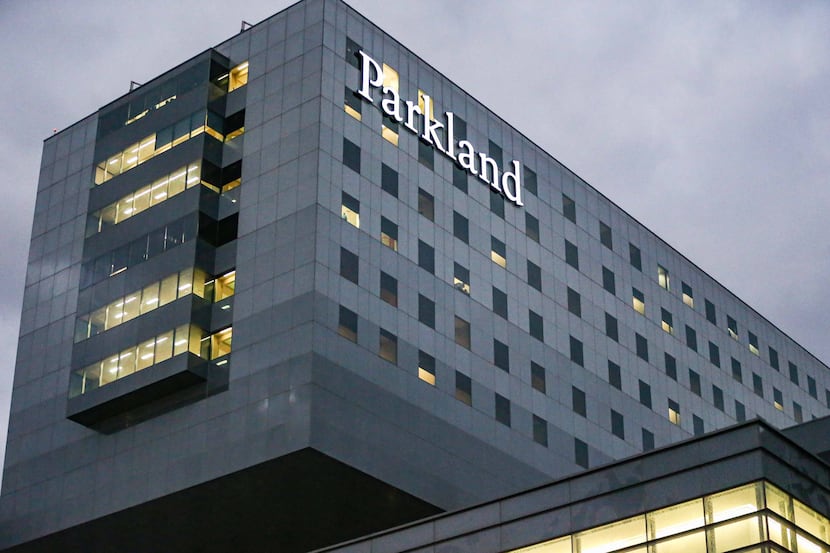The coronavirus pandemic has taken a special toll on the health care industry.
Some doctors and nurses were overwhelmed with sick patients and the demand for crucial supplies. Hospitals and clinics had to recruit temporary workers and pay overtime while many patients put off routine care.
Many companies cut workers or furloughed them in anticipation of a financial hit, and the jobs have not returned. In April, the number of employees in the health care and social assistance fields in Texas was still 54,600 below the pre-pandemic peak.
But the industry’s financial results present a different picture. In another surprising COVID-19 twist, Texas’ large nonprofit health providers got stronger during the pandemic, not weaker. Many hospital districts reported their best financial results in recent memory, according to S&P Global Ratings.
The credit rating agency recently released a report on 21 large nonprofit acute providers in Texas — seven health care systems and 14 stand-alone hospitals, including nine hospital districts. The group has some of Dallas-Fort Worth’s leading health companies, including Baylor Scott & White Health, Texas Health Resources, Methodist Health System and Parkland Health & Hospital System.
“You’ve seen the strong [operators] position themselves to leave the pandemic even stronger,” said Patrick Zagar, primary analyst on S&P’s Texas report. “Many entered the pandemic from a position of strength with some economic tailwinds. They accelerated initiatives, such as telehealth, and we saw a lot of opportunistic borrowing at all-time-low interest rates.”
Providers benefited from steady tax revenue, a decline in uncompensated care and strong earnings at their health insurance units. Relief funds from the federal government also were “a critical supporting factor,” the report said.
S&P looked at many metrics, including median debt burden, operating margin and growth in cash, and it compared Texas providers with nonprofit health players in the U.S.
“The takeaways are pretty easy when you look at the Texas medians,” Zagar said. “Pretty much all the measures are favorable.”
From 2018 to 2020, the median debt burden declined from 3% to 2.5% for the Texas providers, and median operating profit margin rose from 0.7% to 3%. Cash, measured in the number of days it could fund operations, rose from 200 days to 218.
S&P offered another comparison of nonprofit providers it rates for debt: Nationwide, a quarter of those providers have an AA rating from S&P while in Texas, 48% had an AA rating.
“We observe nearly all medians for Texas providers to be stronger than the sector as a whole,” the S&P report said. That “makes clear that the entire [Texas] sample has weathered the pandemic quite well so far.”
The Texas companies rated by S&P are large, with median operating revenue of $5.3 billion. Zagar said many small rural hospitals in Texas have struggled financially while others thrived, including safety-net hospitals.
Consider Parkland, which operates the only public hospital in Dallas County and cares for many indigent residents who don’t have health coverage. In past years, Parkland didn’t generate much total income, but it earned over $308 million in fiscal 2020, which ended in September.
Parkland officials said they believed that was the system’s largest yearly income ever — despite the worst pandemic in a century.
Parkland got about $124.5 million in COVID relief funds, and its tax revenue rose amid a strengthening real estate market. But the key factor in its financial turnaround was a change in the formula for paying health companies that provide uncompensated care.
“It became more favorable to us in a couple of programs, and it was a three-year phase-in,” said Richard Humphrey, Parkland’s chief financial officer.
In 2019, Parkland had an additional $60 million in revenue from government programs. Last year, Parkland took in an extra $181 million.
“This was not related to anything we did” for the pandemic, Humphrey said. “This was related to the government making a policy change that favored hospitals with more charity care.”
Was that helpful in dealing with the COVID crisis?
“Oh my goodness, yes,” said Keri Disney-Story, vice president of clinical finance at Parkland.
Last year, Parkland’s salaries and benefits increased by $122 million, almost 11%, in part because of the response to COVID. Over the same time, emergency room visits to Parkland dropped 14% and inpatient volumes declined almost 9%. Even outpatient business fell.
“COVID’s impact is clear” on the financial results, Humphrey said. “Fortunately, we had some supplemental program increases [for uncompensated care] that were already in the works.”
Baylor, the largest nonprofit health system in Texas, benefited from a big improvement at its health insurance unit. Scott & White Health Plan earned $75 million in fiscal 2020, up from $11 million the year before, S&P said, and a major legal settlement contributed to the gain. Baylor also got $187 million in COVID relief funds and was aggressive in laying off workers and trimming executive pay.
After Baylor posted an operating margin of 10.5% for the quarter ended in September, S&P called it an exceptional performance, especially compared with peers across the nation. Baylor’s margins are likely to decline after the one-time gains, S&P wrote, but the company is still expected to finish stronger than last year.
The performance by Texas providers isn’t surprising, said Britt Berrett, a longtime hospital executive who teaches at the University of Texas at Dallas.
“There’s been a migration to integrated delivery systems, and that’s led to a much more sophisticated business model,” Berrett said.
He cited large hospitals diversifying into outpatient care, surgical centers and affiliations with free-standing ERs. Many moved into new markets, such as Baylor expanding into Austin. Some teamed with medical schools to support research and tackle the most complex cases.
When COVID hit, large providers collaborated with rivals on patient care and took aggressive steps to protect their franchises, Berrett said.
“The pandemic proved they were ready,” he said.

